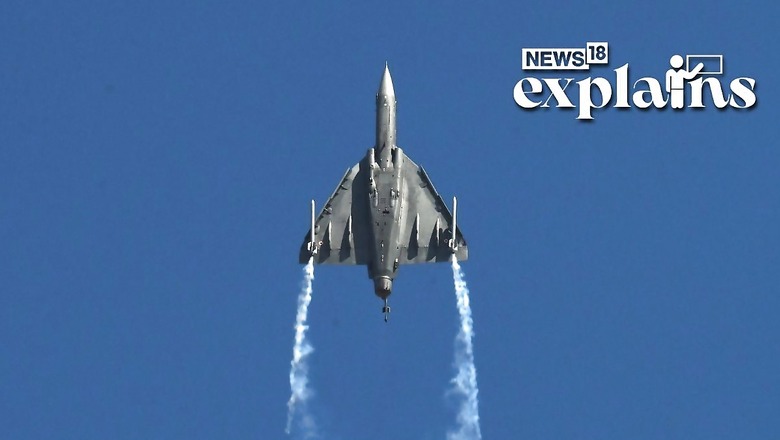
views
The decision taken by General Electric to manufacture jet engines in India through transfer of technology is a landmark agreement, Prime Minister Narendra Modi said on Thursday, noting that this will give India-US defence cooperation a “new character”.
GE aerospace has announced it has inked a pact with Hindustan Aeronautics Limited (HAL) to jointly produce fighter jet engines for the Indian Air Force’s Light Combat Aircraft (LCA)-Mk-II Tejas.
“The decision taken by General Electric to manufacture engines in India through transfer of technology is a landmark agreement,” Prime Minister Modi told reporters at a joint news conference with US President Joe Biden at the White House.
This also opens up new job opportunities in both countries, he said and added that “this will give our defence cooperation a new character in the times to come”.
“The defence industries and startups of both countries are important partners in this cooperation. Bringing them together is the key objective of our defence industrial roadmap,” Modi said.
In a joint statement, President Biden and Prime Minister Modi hailed the landmark signing of the MoU between GE and HAL.
About the Deal
GE has signed a memorandum of understanding with HAL (Hindustan Aeronautics Limited) that includes the potential joint production of GE Aerospace’s F414 engines in India. GE Aerospace is working with the US government to obtain the necessary export authorization for this collaboration. The aim is to support the Indian Air Force’s Light Combat Aircraft Mk2 program, with the F414 engines being used in the indigenous Tejas Mark-2 fighter jets, according to a report by Firstpost.
The GE F414 engine is highly regarded for its performance and is already used in Boeing’s Super Hornets and Gripen fighter jets. It is an American afterburning turbofan engine in the 22,000-pound (98 kN) thrust class. The F414 offers unrestricted engine performance with rapid throttle response and no throttle restrictions. It excels in afterburner light and stability, providing extra thrust when needed. Its advanced technologies make it versatile and suitable for advanced combat aircraft, the report says.
Derived from the GE F404 engine, the F414 produces up to 18,000 pounds of thrust, making it suitable for various aircraft and missions. It is designed for easy maintenance, reducing ownership costs, and meets current environmental regulations while prioritizing future environmental sustainability. The engine utilizes integrated electronic engine instrumentation, providing real-time performance data to enable informed decisions by pilots. Its high-pressure compressor (HPC) offers improved efficiency and lower emissions compared to previous engine generations.
However, the GE F414 engine comes at a significant cost. Reports indicate a price tag of $3.71 million (approximately Rs 30 crore) per engine.
Why Does the Deal Matter?
According to a report by the Indian Express, only a few countries, like the US, Russia, the UK, and France, have the expertise and knowledge to manufacture engines for combat aircraft. India has been striving for self-reliance in critical technologies but has not yet mastered this particular field.
India’s Gas Turbine Research Establishment (GTRE) worked on developing engines for the Light Combat Aircraft (LCA) program, but the ambitious Kaveri engine project faced challenges. Despite developing prototypes and conducting extensive testing, the engines did not meet the requirements for fighter aircraft, falling short in terms of thrust.
In 2011, the Comptroller and Auditor General (CAG) criticized the GTRE for its inability to deliver the engine for the LCA, leading to cost overruns.
While the LCA Tejas currently uses the GE-404 engine, the government has expressed plans to utilize technological capabilities gained from the Kaveri engine project, including in drone applications. Typically, countries possessing advanced engine manufacturing technology have been unwilling to share it, making the anticipated deal to manufacture GE’s F414 engines in India a significant breakthrough. This agreement will mark the end of India’s prolonged pursuit of advanced combat jet engine technology, the report explains.

















Comments
0 comment